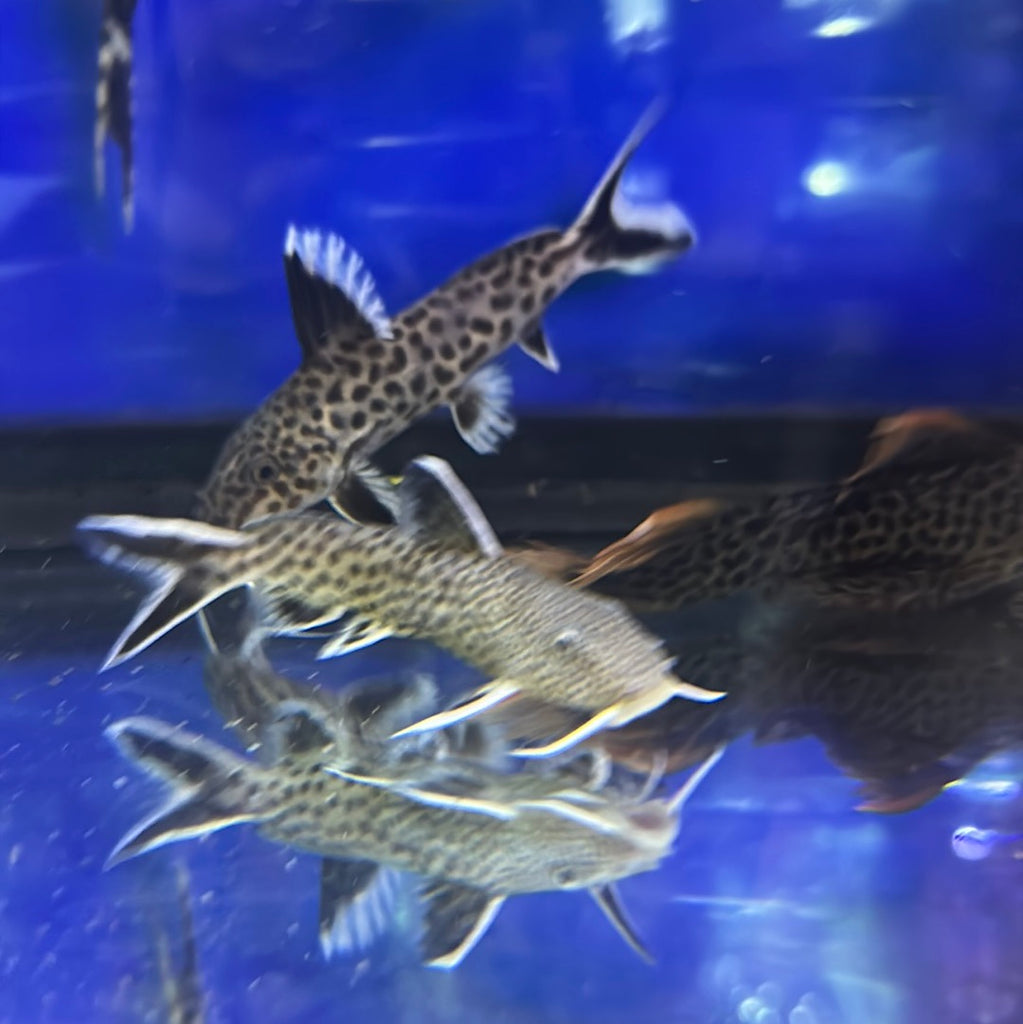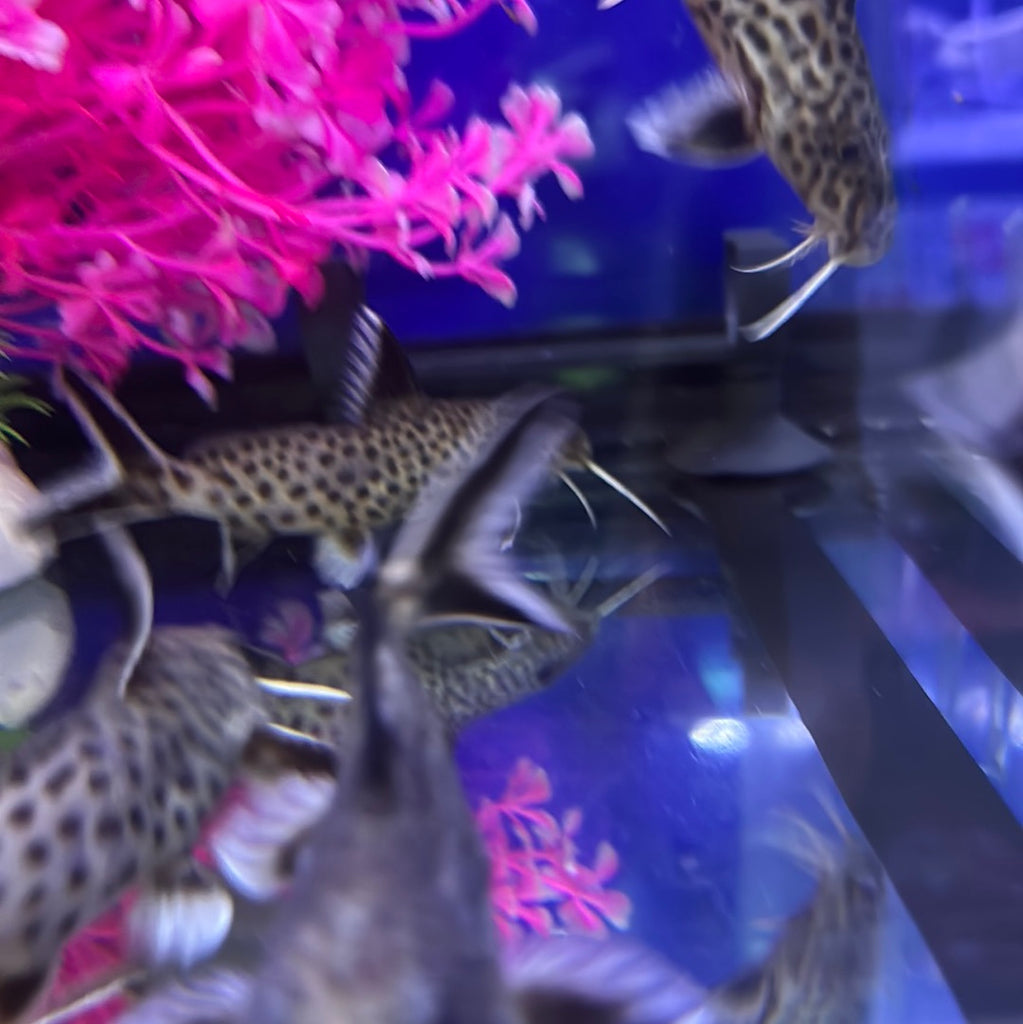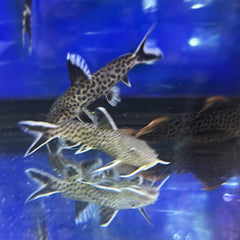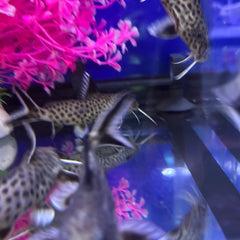Tanganicae Synodontis Catfish
S. tanganyicae, like all members of the genus Synodontis, possesses a robust and bony head capsule that extends backward to the first spine of the dorsal fin. Within its head lies a distinctive narrow external protrusion known as a humeral process, which aids in species identification. In the case of S. tanganyicae, the humeral process is wide, triangular, and rough in texture, lacking a ridge along its lower edge. The top edge of the process is concave and terminates in a blunt point.
This fish features three pairs of barbels: the maxillary barbels on the upper jaw, and two pairs of mandibular barbels on the lower jaw. The maxillary barbel possesses a well-developed membrane near its base and remains unbranched. It extends at least as far as the base of the pectoral fin. The outer pair of mandibular barbels reaches just short of the pectoral girdle and contains four to seven branches without secondary branches. The inner pair of mandibular barbels is approximately one-third the length of the outer pair and consists of four to six branches with secondary branches present.
S. tanganyicae's skin displays numerous small vertical skin folds, a characteristic common among Syndontis species endemic to Lake Tanganyika. While the exact purpose of these skin folds is unknown, they are a distinct feature of the species. External papilla are also present but do not extend onto the fins.




